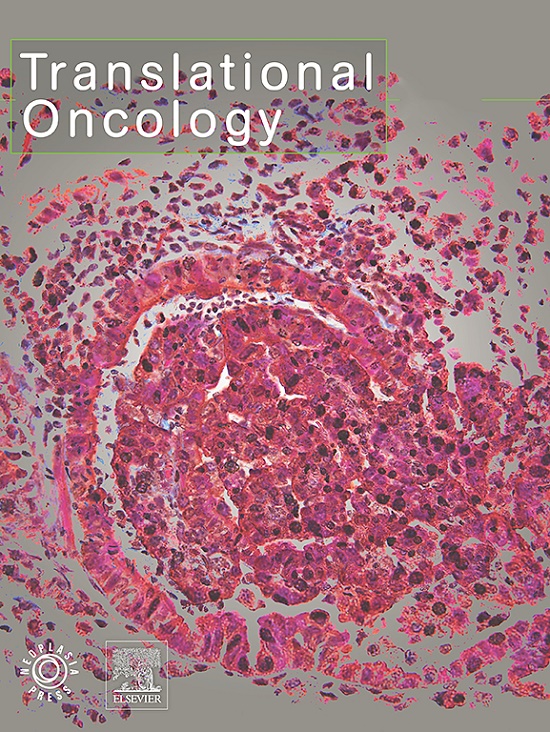基于含有吡罗替尼的新辅助疗法的最佳联合化疗方案对HER2阳性乳腺癌的探索:一项多中心真实世界研究
IF 5
2区 医学
Q2 Medicine
引用次数: 0
摘要
背景事实证明,吡罗替尼(Py)与细胞毒性药物联合治疗早期人表皮生长因子受体2(HER2)阳性乳腺癌(BC)是有效的。然而,最佳化疗方案尚不清楚。本研究试图从真实世界的研究数据中探索这一问题。方法从全国 23 个中心收集早期 HER2 阳性 BC 患者的信息。他们被分为蒽环类药物组(A 组)和非蒽环类药物组(非 A 组)。非A组患者又分为铂类组和非铂类组,以及短周期(≤4个周期)类固醇类药物组和长周期(4个周期)类固醇类药物组。评估了总病理完全反应率(tpCR,ypT0/is ypN0)和乳腺病理完全反应率(bpCR,ypT0/is)。术后病理结果显示,A 组的 tpCR 率为 36.8%,bpCR 率为 42.1%;非 A 组的 tpCR 率为 47.8%,bpCR 率为 53.6%,P 值分别为 0.273 和 0.254。长周期类固醇组的 tpCR 和 bpCR 率分别为 60.8% 和 66.7%。短周期类固醇组的 tpCR 和 bpCR 率分别为 11.1% 和 16.7%(均为 P<0.001)。铂组的 tpCR 率(分别为 62.9 % 对 32.4 %;P = 0.011)和 bpCR 率(分别为 65.7 % 对 41.2 %;P = 0.041)更高。此外,在不使用蒽环类药物的情况下,含铂、长周期的紫杉类药物方案似乎能取得更好的疗效。本文章由计算机程序翻译,如有差异,请以英文原文为准。
An exploration of the optimal combination chemotherapy regimen based on neoadjuvant therapy containing pyrotinib for HER2-positive breast cancer: A multicenter real-world study
Background
The combination of pyrotinib (Py) with cytotoxic agents proved to be effective in early human epidermal growth factor receptor 2 (HER2)-positive breast cancer (BC). However, the optimal chemotherapy regimen is unknown. This study attempts to explore it from real-world research data.
Methods
Information was collected from patients with early-stage HER2-positive BC from 23 centers across the country. They were categorized into the anthracycline group (A group) and non-anthracycline group (non-A group). Patients in the non-A group were further categorized into the platinum group and non-platinum group and the short-cycle (≤4 cycles) taxane group and long-cycle (>4 cycles) taxane group. Total pathological complete response (tpCR, ypT0/is ypN0) and breast pathological complete response (bpCR, ypT0/is) rates were assessed.
Results
A total of 107 patients were enrolled. Postoperative pathology indicated a tpCR rate of 36.8 %, a bpCR rate of 42.1 % in the A group, the non-A group had a tpCR rate of 47.8 %, and a bpCR rate of 53.6 %, with P-values of 0.273 and 0.254, respectively. In the long-cycle taxane group, the tpCR and bpCR rates were 60.8 % and 66.7 %, respectively. In the short-cycle taxane group, the tpCR and bpCR rates were 11.1 % and 16.7 %, respectively (both P<0.001). The platinum group had higher tpCR rate (62.9 % vs. 32.4 %, respectively; P = 0.011) and bpCR rate (65.7 % vs. 41.2 %, respectively; P = 0.041).
Conclusion
As for a neoadjuvant therapy regimen with Py, an anthracycline-free regimen is feasible. Besides, platinum-containing, long-cycle taxane regimens appear to achieve superior efficacy under anthracycline-removed conditions.
求助全文
通过发布文献求助,成功后即可免费获取论文全文。
去求助
来源期刊

Translational Oncology
ONCOLOGY-
CiteScore
8.40
自引率
2.00%
发文量
314
审稿时长
54 days
期刊介绍:
Translational Oncology publishes the results of novel research investigations which bridge the laboratory and clinical settings including risk assessment, cellular and molecular characterization, prevention, detection, diagnosis and treatment of human cancers with the overall goal of improving the clinical care of oncology patients. Translational Oncology will publish laboratory studies of novel therapeutic interventions as well as clinical trials which evaluate new treatment paradigms for cancer. Peer reviewed manuscript types include Original Reports, Reviews and Editorials.
 求助内容:
求助内容: 应助结果提醒方式:
应助结果提醒方式:


